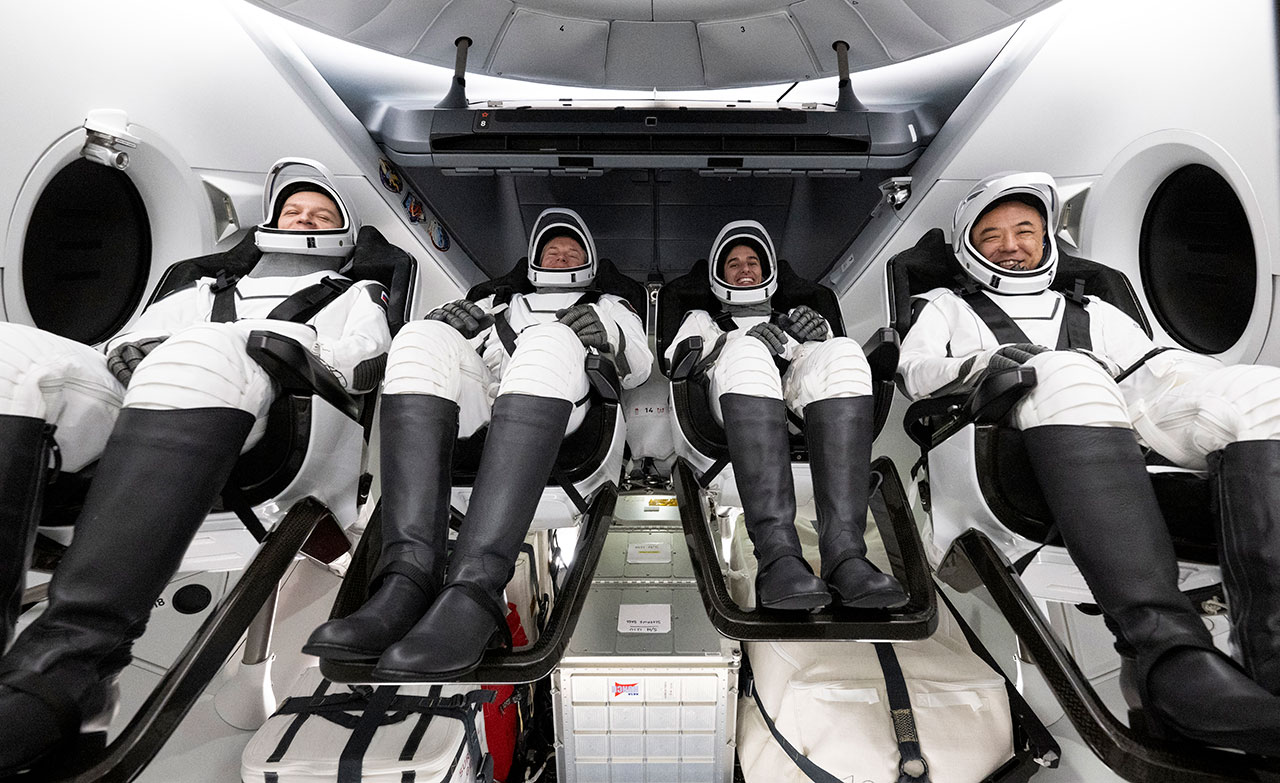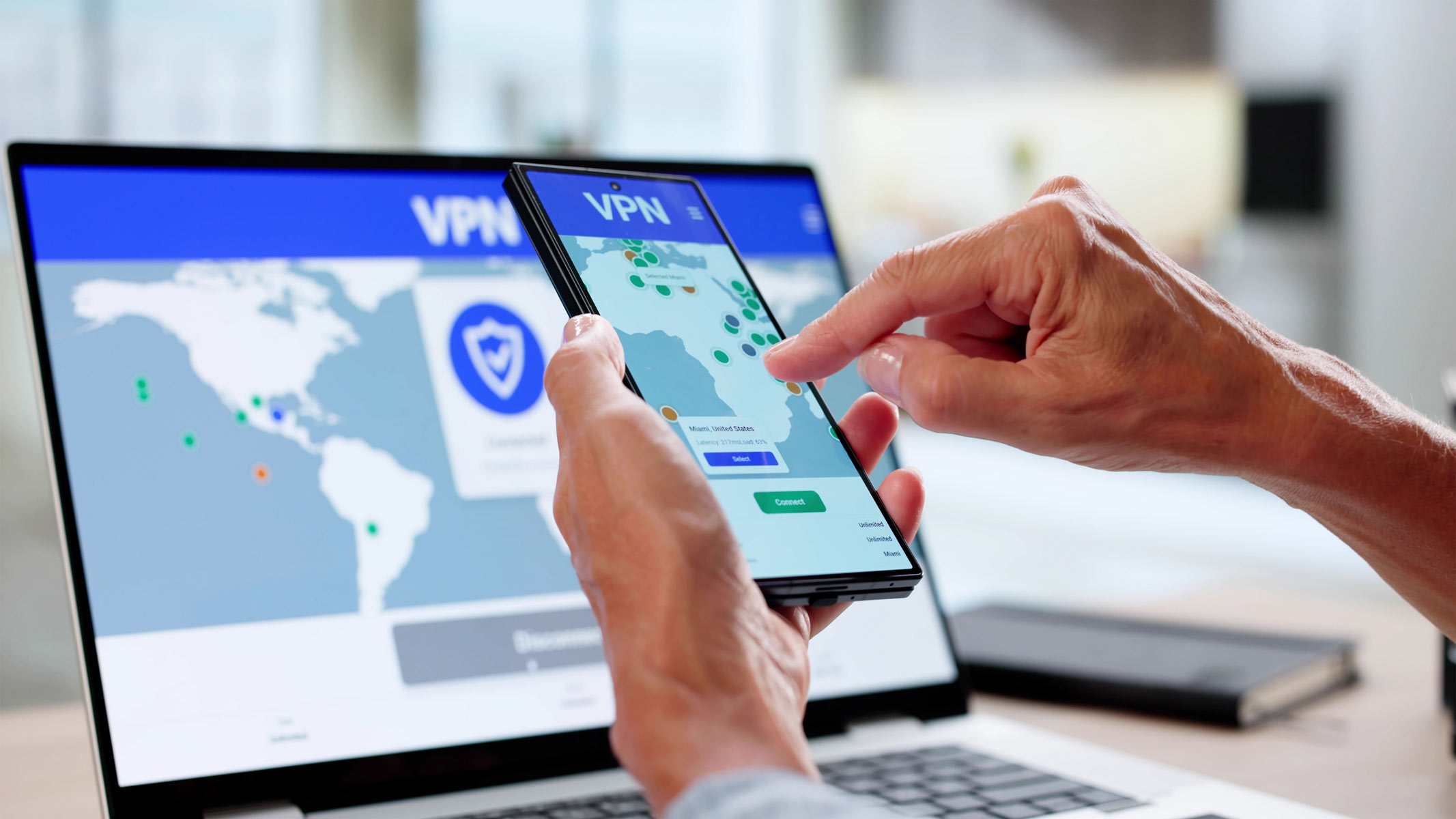SpaceX Crew-7 astronauts share the good and bad of spending 6 months in space
The international crew sat down for their first post-flight news conference since landing two weeks ago.

Andreas Mogensen was impressed by how smooth a landing it was.
The first European Space Agency (ESA) astronaut (and first non-American) to serve as a pilot on a U.S. commercial crew spacecraft, Mogensen and his SpaceX Crew-7 crewmates returned to Earth after a 197-day stay aboard the International Space Station (ISS) on March 12.
Mogensen, speaking at his crew's first post-flight news conference at NASA's Johnson Space Center in Houston on Monday (March 25), likened their splashdown to "plopping into the water" of a swimming pool while wearing a life vest.
"What I noticed in particular was the smoothness of the landing compared to my first flight," said Mogensen, referring to his 2015 touchdown on the steppe of Kazakhstan aboard a Russian Soyuz spacecraft. "The [SpaceX] Dragon lands in water, and I think that makes a big difference."
"It was actually kind of a very soft splash," Mogensen said.
Related: SpaceX's Crew-7 capsule returns 4 astronauts to Earth with predawn splashdown (video)
NASA astronaut Jasmin Moghbeli, who commanded Crew-7, agreed that the landing was soft, but then found what came next to be rougher than what others observed.
Breaking space news, the latest updates on rocket launches, skywatching events and more!
"I felt like we were really rocking side to side," she said, describing the conclusion of her first spaceflight, "but then everyone I talked to was like, 'Oh, the water was glass when you landed, there was barely any wind.' So I definitely felt a lot more motion than there was."
That movement didn't end when they got back to solid ground. The crew — including Moghbeli, Mogensen and Japan Aerospace Exploration Agency (JAXA) astronaut Satoshi Furukawa (Roscosmos cosmonaut Konstantin Borisov, the fourth member of Crew-7, missed Monday's event, having already returned to Russia) — were subjected to physiological tests to see how they adjusted to the reintroduction of gravity.
"Shortly after landing, we try to walk first with our eyes open, and afterwards with our eyes closed," said Mogensen. "We were all a little wobbly on our feet, but still capable of walking more or less in a straight line as long as our eyes were open because they were our primary source of balance after having been six months in space."
"With our eyes closed, because we hadn't used the sense of balance in our ears for six months, our brains had to reinsert that sensor into its into its suite of sensors, and that takes a while. So with our eyes closed, it was almost impossible [to walk a straight line]," he said.
"I did a nice tap dance test for that eyes-closed test," said Moghbeli with a laugh.
Related: The human body in space: 6 weird facts
Fortunately, they adapted in quick fashion, which freed them to start enjoying some of the aspects of life they missed most while off Earth.
"I missed a hot bath, especially in a hot spring, because water doesn't drop and accumulate in zero gravity," said Furukawa.
Similarly, Moghbeli said she missed taking hot showers, but equally desired a wider variety of foods.
"You do have a set menu up there and you cannot just eat whatever you want whenever you want," she said. "So my first lunch [back on Earth] was a nice roast beef sub with some Cape Cod potato chips, and then my first dinner was a 16-ounce prime rib with fries."
During their time together on the space station, the Crew-7 astronauts saw the arrival of seven visiting vehicles and the departure of seven more; contributed to hundreds of experiments and technology demonstrations; and Moghbeli completed the first spacewalk of her NASA career.
It was near the end of that six-hour and 42-minute extravehicular activity (EVA) that Moghbeli made worldwide news by letting her tool bag float away and be lost in space. The incident, which was minor but a challenge unto itself, helped highlight another difficulty the astronauts encountered while in orbit.
"I found one of the big challenges was trying to take a photo of a spot [on Earth] that you want to photograph, and you try to time it out, you try to plan your day, and then you make your way to the Cupola or one of the other windows and you get set, you get ready and then it's just a little bit cloudy," said Mogensen. "Even if it's not cloudy, maybe it's a little bit misty or the air isn't quite as clear, and then you don't get a good photo."
"So it's actually quite challenging if you're trying to capture a specific target," he said.
That exact thing happened to Furukawa, but it was not a cloud or poor air quality that got in the way of his target, a mountain peak southwest of Tokyo.
"We were in Node 1, I think, having lunch or dinner, and Satoshi had been out in the Cupola taking pictures. He comes in and he's like, 'Well, you know, I'm very, very, very sorry. But you know, I I took this picture.' And we were all thinking, 'What's going on?'"
"He had managed to take a picture of the tool bag as it was transiting Mount Fuji. He had been trying to take a picture of Mount Fuji and ended up with a picture of the tool bag," Mogensen said, laughing.
Overall, their six months in space were very good, but some days were better than others, said Moghbeli.
"If I am giving an honest answer, then like anything else, if you're spending six or six and half months somewhere like we did, you are going to have bad days, absolutely," Moghbeli said in response to a question from Space.com. "I loved being on the space station, I wouldn't trade it for the world. It was the most incredible thing I've done in my life, but there were definitely days where … you realize you're missing a lot of milestones and things back here on Earth."
Further, there were maintenance tasks that were less fulfilling than getting to conduct groundbreaking science and technology demonstrations. Still, said Moghbeli, it was worth the journey.
"At the end of the day, I absolutely loved it. I was very sad to leave the space station," she said.

Robert Pearlman is a space historian, journalist and the founder and editor of collectSPACE.com, a daily news publication and community devoted to space history with a particular focus on how and where space exploration intersects with pop culture. Pearlman is also a contributing writer for Space.com and co-author of "Space Stations: The Art, Science, and Reality of Working in Space” published by Smithsonian Books in 2018.
In 2009, he was inducted into the U.S. Space Camp Hall of Fame in Huntsville, Alabama. In 2021, he was honored by the American Astronautical Society with the Ordway Award for Sustained Excellence in Spaceflight History. In 2023, the National Space Club Florida Committee recognized Pearlman with the Kolcum News and Communications Award for excellence in telling the space story along the Space Coast and throughout the world.


